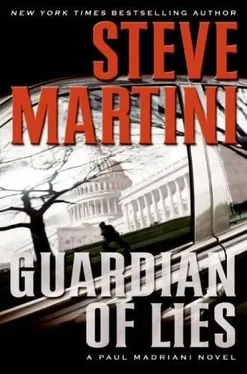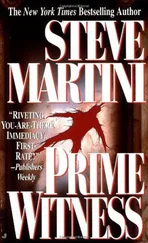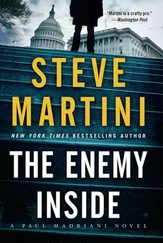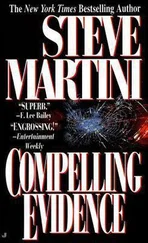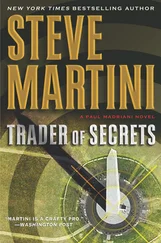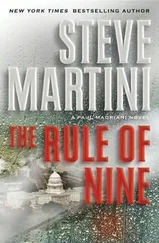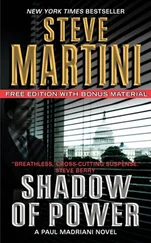Thorpe wanted to be sure he knew what he was dealing with before he went up the chain and got his head handed to him by someone who didn’t like the message he was delivering, especially if there was any chance he was wrong. The acting director had now fallen on his own sword. Thorpe wasn’t even sure if he knew what higher authority looked like anymore.
“In this case, you can forget everything you’ve read,” said Llewellyn. “And I don’t say that lightly. It’s a special case.”
“In what way?”
“The Soviet Seventy-ninth Brigade, according to the accounts in the Russian documents, possessed a highly skilled field-level maintenance unit. The FKRs were designed to be completely field maintained.
“More to the point, each transport van contained multiple replacements for every critical part. We’re talking about a gun type here, simplicity itself, exceedingly reliable and easy to maintain. The entire device could fit into a fair-size steamer trunk. The gun barrel would be no more than perhaps three feet long and between three and four inches in diameter, with a smooth bore. According to the information in the documents, the man we’re looking for was one of the brigade’s top armorers. He was trained and experienced in maintenance on the system in question. He would know how to store it, how to keep it alive, and if necessary, how to bring it back to life.”
“That’s possible? He could do that?”
“With an ample supply of replacement parts, yes.”
“What about the Russians? Can they help us at all?” said Thorpe.
“State Department has been in contact with them. Relations, as you know, are not good. On the international front, to deflect heat, in the event that something happens, they’re taking the position that it’s an old-empire problem, a holdover from the Soviets for which they are not responsible. Unofficially, they’re trying to obtain design details, drawings if they can find them. But it’s an old system. It’s been obsolete for decades, not even remotely close to anything in their current arsenal. Their thermonuclear stockpile, fifty megatons or more, enough to take out twenty square miles, would be implosion-type bombs, a core of plutonium surrounded by conventional explosives and triggered by highly complex detonation systems. What we’re hearing is that a lot of the documentation on the older-type weapons, the stuff we’re dealing with here, was trashed after the collapse of the Soviets. So finding information may be next to impossible.”
“So correct me if I’m wrong. You’re telling me our cause for concern turns on two contingencies: that the man is still alive and that he has the necessary spare parts to keep the weapon alive.”
“Correct.”
“We may know more about the man in a day or so. For now, let’s talk about the parts,” said Thorpe.
Thorpe and Llewellyn were about as different as two people could be. Llewellyn was an intellectual from MIT, a scientist who headed up an office of nerds all packing scientific calculators that could perform three hundred functions and carry out equations to a dozen decimal points. For this reason it seemed strange that the two men always gravitated toward each other whenever there was a crisis, as if each compensated for some deficiency in the other.
“Let’s assume for the moment that he doesn’t have the parts. Could he fabricate them?”
“It’s possible, but it becomes much more problematic. The tolerances required for fabricated parts would be critical. He would require access to tools and dies that would be difficult to obtain. Even with the proper equipment, it’s questionable. Without skilled help I would say his chances of success drop dramatically. The man’s an armorer, not a machinist.”
“Good,” said Thorpe. “Now how do we know he has the spare parts?”
“The KGB reports,” said Llewellyn. “We know that the Russian, Nitikin, arrived on Castro’s doorstep at Punto Uno the afternoon of October twenty-eighth.”
“Excuse me. What’s Punto Uno?” said Thorpe.
“It was central command, military headquarters for the Cuban government during the missile crisis. Castro always hung out there whenever there was a national calamity.”
“So Castro was involved personally?”
“We don’t know, but we have to assume so. According to the KGB reports that were compiled from Soviet military accounts, Castro was present at Punto Uno when the Russian arrived. Apparently the Russian was invited inside the compound. He was there for a little over an hour. What happened inside, who he met, who he may have talked to, the Soviets couldn’t be certain.”
“Castro would have wanted to cover his ass,” said Thorpe. “He wouldn’t want to get crosswise with the Soviets.”
“Nor they with him,” said Llewellyn.
“So we have no idea whether the Cubans might be involved now?”
“No,” said Llewellyn.
“Go on, let’s get back to the parts.”
“The Russian was seen again later that night, October twenty-eighth, this time at the port at Mariel. Both times, at Punto Uno in the after noon and at Mariel that night, he was driving a large Soviet transport van. According to the Soviet military and the later KGB reports when he arrived at Mariel, he was under the protection of a good-size contingent of Cuban troops. They estimated more than two hundred armed soldiers and at least two armored vehicles. It’s clear he wouldn’t have gotten off the island without the Cubans.”
“So what you’re saying is that to get it back, the Russians would have had to engage in a shooting war with their allies,” said Thorpe.
“Correct. And according to all the reports,” said Llewellyn, “ Moscow wasn’t willing to do it. At that moment they had a full plate trying to stare us down.”
“The van the Russian was driving,” said Thorpe, “I assume this is the key piece of evidence?”
“Correct. It was a fully equipped Soviet mobile-weapons van. According to the KGB it had the weapon and a full complement of replacement parts.”
Llewellyn handed Thorpe a photograph. It was an enhanced enlargement showing a line of military vehicles, what looked like heavy-duty trucks parked side by side near a sizable Quonset building with a corrugated arched roof.
“That was taken by a U.S. Navy Crusader on an aerial recon flight on October twenty-fifth, three days before the Russian disappeared. The building is located at Bejucal. It was the central storage site. We didn’t realize it at the time because of the single security fence and the absence of any real military presence around it. Apparently the Soviets believed the best defense was deception,” said Llewellyn. “It may also have compromised their internal security.
“The vans, here and here.” Llewellyn directed Thorpe’s attention to the photograph with the point of his pen. “Those are mobile-weapon movers. That’s what our Russian friend was driving when he showed up at Punto Uno and again at Mariel. The limited security around the facility probably explains how he was able to drive it away. We know that the weapon type in question had already been deployed, because three of them were aimed at Guantanamo. Of course, we didn’t know that until the 1990s. The delivery system would have been on a truck and trailer. It would have flown off a ramp-”
“He doesn’t have one of those?” said Thorpe.
“No. The original delivery system would have been more cumbersome than it was worth. It would have been too large and too visible. He certainly wouldn’t want to use it today. It would be much easier to deliver it on a ship, or better yet, the bed of a truck.”
“So what you’re saying is that if he had the van, he had the weapon and the parts, and with that he doesn’t need anything else to maintain it.”
Читать дальше
